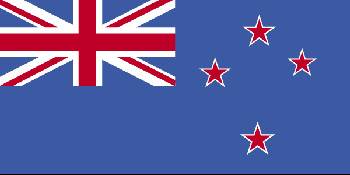
New Zealand was the first country in the world to have a government ministry for tourism, and Tourism New Zealand celebrated its centenary in 2001. The Department of Tourist and Health Resorts was established in Rotorua in 1901 to develop tourism.
New Zealand was the first country to give women the vote (1893).
New Zealand is the first country in the world to see each new day.
A New Zealander, Sir Edmund Hillary, was the first person to climb Mount Everest (with Sherpa Tenzing Norgay in 1953). Sir Hillary died on January 11, 2008.
It was in fact a New Zealander, Richard William Pearse, who took the world’s first flight – nearly two years before the Wright Brothers in the United States. On 31 March 1902 Pearse managed to fly his homemade aircraft 91 metres in a field near Timaru.
William Hamilton, a Canterbury farmer, developed the propellerless jetboat in 1953 based on the principle of water jet propulsion. Hamilton went on to invent the hay-lift, an advanced air compressor, an advanced air conditioner, a machine to smooth ice on skating ponds, the water sprinkler and also contributed to the improvements of hydropower.
Baron Ernest Rutherford, a New Zealander, was the first person in the world to split the atom (in 1919). Before that, Rutherford also succeeded in transmitting and detecting ‘wireless waves’ a year before Marconi, but left this work to research radioactivity and the structure of the atom at Trinity College in Cambridge, England. Rutherford was awarded the Nobel Prize for his work.
There are more golf courses in New Zealand per capita than any other country in the world (more than 400 golf courses for 4 million people).
Auckland reputedly has more boats per head of population than any other city in the world.
The old Government Building in Wellington is the largest wooden structure in the Southern Hemisphere (8,200 square metres).
Curio Bay in Southland is one of the most extensive and least disturbed examples of a petrified forest in the world (the forest is approximately 180 million years old).
The vineyards of Central Otago, New Zealand, are the southern-most vineyards in the world (45° South).
Tongariro National Park was the second national park to be established in the world (Yellowstone National Park in the United States was the first).
Frying Pan Lake near Rotorua, is the world’s largest hot water spring reaching a temperature of 200°C at its deepest point.
Waikoropupu Springs, located near Nelson, are reputedly the clearest freshwater springs in the world with an outflow of approximately 2,160 million litres of water every 24 hours.
New Zealand is home to the world’s only flightless parrot, the kakapo, as well as the only alpine parrot in the world, the kea.
MORE NEW ZEALAND INFORMATION and TRAVEL INFO: New Zealand Travel Portal
(Source: NZ Tourism Office, Press)

